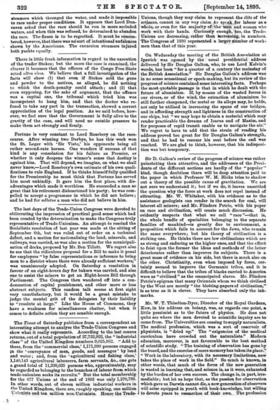The Times of Saturday publishes from a correspondent an interesting
attempt to analyse the Trade-Union Congress and show what it really represents. According to the last census returns, out of a total population of 37,732,922, the " industrial class " of the United Kingdom numbers 9,025,902. " Add to these, from the commercial class,' 1,171,990 persons engaged in the conveyance of men, goods, and messages ' by land and water ; and, from the agricultural and fishing class,' 1,140,143 agricultural labourers, farm servants, &c., one gets a grand total of 11,338,035 persons who, approximately, may be regarded as belonging to the branches of labour from which trade-unionism seeks its recruits." But the total membership for the 677 Unions at the end of 1893 was only 1,270,789. In other words, out of eleven million industrial workers in the United Kingdom, there are, roughly speaking, one million Vmonists and ten million non-Unionists, Hence the Trade- Unions, though they may claim to represent the elite of the artisans, cannot in any way claim to sptak for labour as a whole, or even for the majority of the men and women who work with their hands. Curiously enough, too, the Trade- Unions are decreasing, rather than increasing, in numbers. The Congress of 1890 represented a larger number of work- men than that of this year.


































 Previous page
Previous page